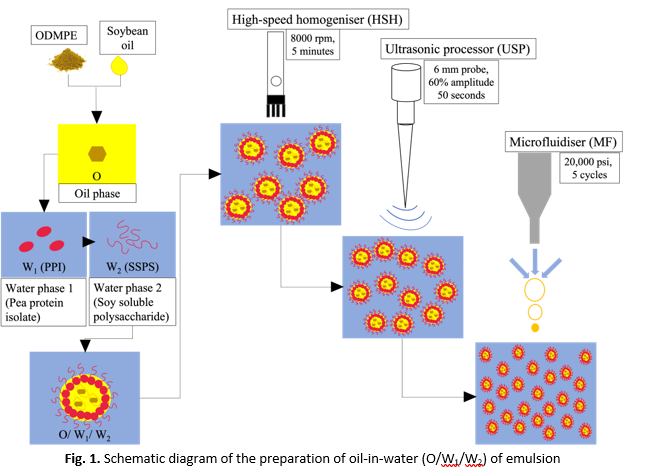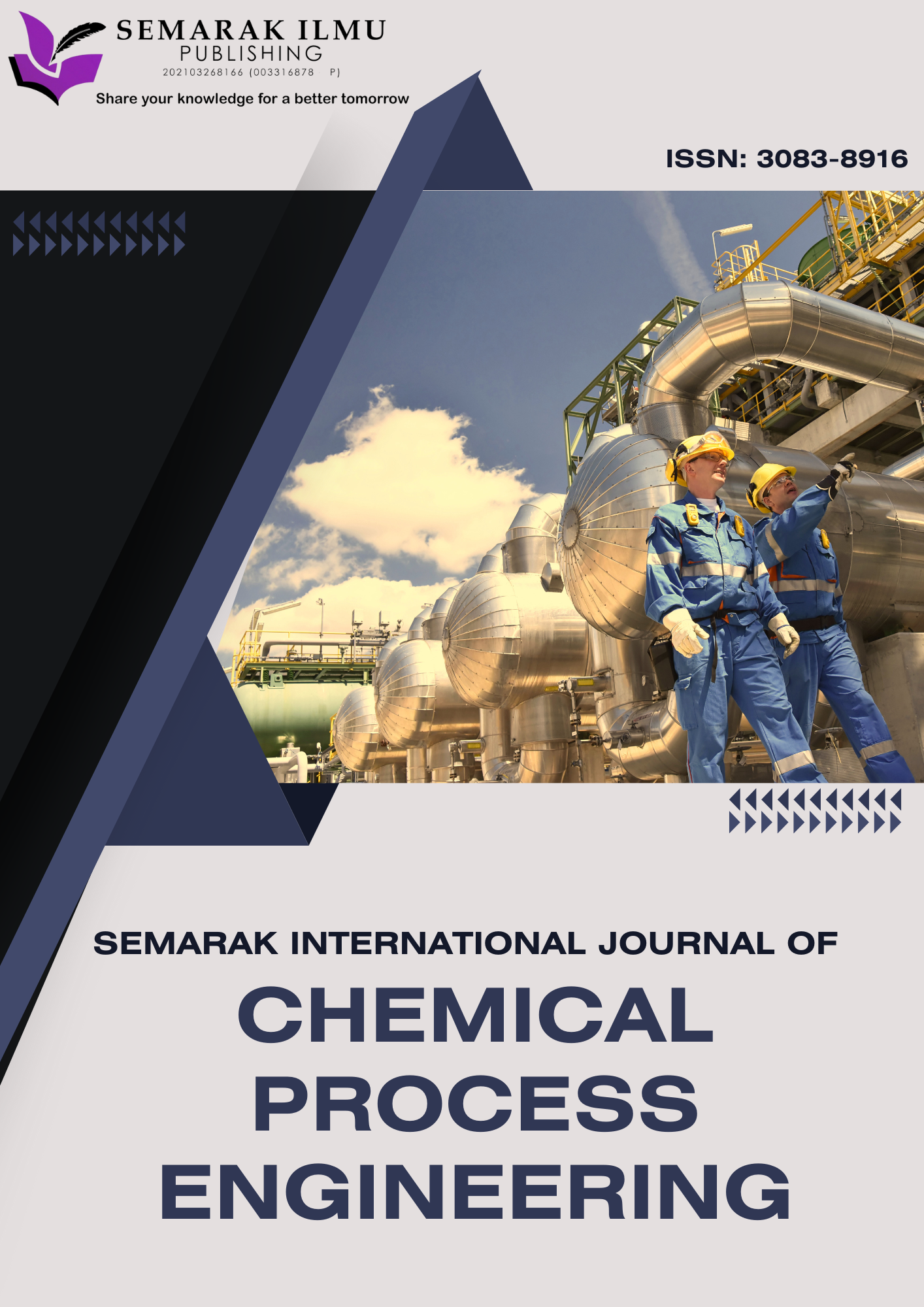Ultrasonication-Enhanced High-Energy Emulsification for Improved Physicochemical Properties of Mangosteen Pericarp Nanoemulsions
DOI:
https://doi.org/10.37934/sijcpe.4.1.1021Keywords:
Nanoemulsion, pea protein isolate, ultrasonication, microfluidisation, mangosteen pericarp extractAbstract
Formulating stable emulsions encapsulating hydrophobic plant bioactives remains a significant challenge due to poor solubility and chemical instability. This study compares two high-energy emulsification methods, high-speed homogenisation followed by microfluidisation (HSH-MF) and high-speed homogenisation followed by ultrasonication and microfluidisation (HSH-USP-MF) for preparing emulsions containing optimised dried mangosteen pericarp extract (ODMPE). Using identical formulations with food-grade biopolymers as emulsifiers, emulsions were characterised by droplet size, polydispersity index (PDI), zeta potential, antioxidant activity, and encapsulation efficiency (EE) after preparation and during storage. Results showed that both the HSH-USP-MF and HSH-MF methods produced emulsions C, C7 and D with similarly small droplet sizes in the nanometer range (296-336 nm), low polydispersity index (0.3-0.4), and acceptable zeta potentials (-36 to -40 mV), indicating effective droplet size reduction uniformity, and electrostatic stability. However, the HSH-USP-MF method combined with pea protein isolate (PPI) at pH 7 yielded emulsions with the highest antioxidant activity, reflecting superior electrostatic stability and bioactive protection compared to HSH-MF emulsions. Emulsion C7 (HSH-USP-MF at pH 7) exhibited the highest EE (87.6%) and superior antioxidant retention, maintaining over 80% EE after one month. In contrast, emulsions prepared by HSH-MF showed moderate encapsulation (54–59%) and slightly lower stability. The improved performance of HSH-USP-MF emulsions is attributed to ultrasonic cavitation, which enhances emulsifier adsorption and interfacial film strength, coupled with optimised protein charge at neutral pH that promotes electrostatic repulsion and droplet stabilisation. Overall, this study demonstrates that integrating ultrasonication within the emulsification sequence significantly improves the physicochemical properties and functional stability of ODMPE-loaded emulsions. These findings provide valuable insights for designing scalable, efficient delivery systems for hydrophobic bioactives in functional foods and nutraceuticals.









